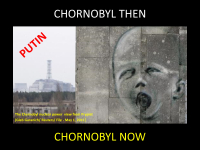Our websites offer information mostly for educational purposes with no intent to alter health care protocols nor to serve as a sole source of medical information.
Always seek the advice of your local health care provider.
|
× UKRAINIAN CHILDREN WITH DISABILITIES HAVE SPECIAL NEEDS |
NECKLACE FROM TAMAN

"Ancient Jewlery from the Taman Peninsula (Russia) across from Kerch in Crimea, Ukraine" (see details) (see related A | B | C | D | E), 400 Unknown Masters from Taman Peninsula area in Russia. Romisch-Germanisch Museum, Cologne (Koln), Germany
During the 4th-5th. c. tribal germanic goldsmiths in the lower Danube and Ukraine gained considerable reputation across the Roman Empire and the jewels they produce have been found in many excavation sites. These masters were fond of precious stones they polished to make large beads for heavy necklaces combined with pearls or charactersitic gold tubes or beads. Among the main sites where such jewels were found are regions in Kerch in Crimea and southern Ukraine in general. The goldsmiths relied on classic Greek and Roman techniques enriched by far more ancient styles and approaches. The result were precious and opulent jewels popular everywhere in the Roman Empire. (See orientation map with historical pointers)
The Taman peninsula on the Azov sea is near Kerch where most of similar jewelery has been discovered (see related illustration for legends). Also see a more detailed image of the collar.
In ancient times, the Taman area was settled by the Maeotae and Sindi and later was inhabited by Sarmatians, Greeks and Jews. The city of Taman became the capital of Great Bulgaria until iit fell under the control of the Khazars in the mid-7th. century. By the 9th. century it fell under the control of the Kievan state until the Mongols seized the area in 1239. For most of the 1400s, the Taman peninsula was ruled by the Genoese Jewish family of Simeone de Guizolfi until it was seized by the Khanate of Crimea in 1483 and the Ottoman Empire in 1783. The Russian Empire gained final control of the area in 1828. Michael Lermontov describes the area in his novel "A Hero of Our Time".
20231229 ww
|








